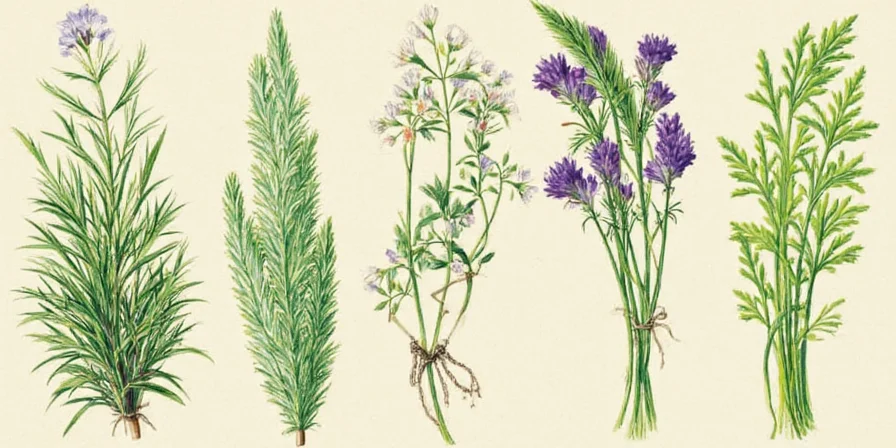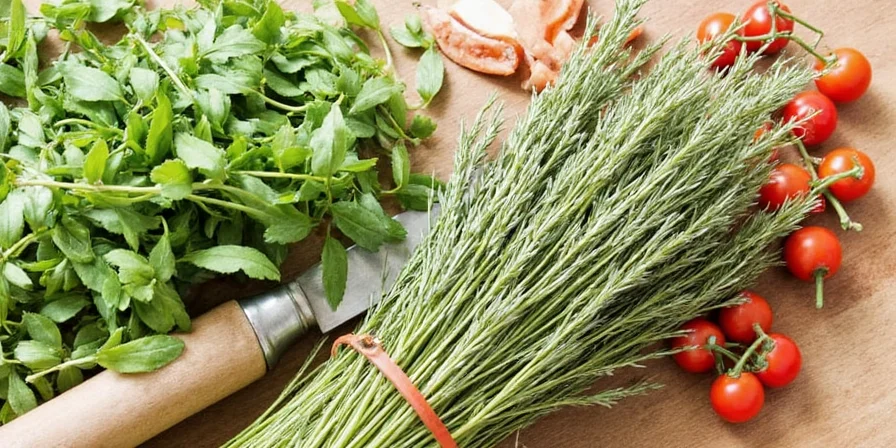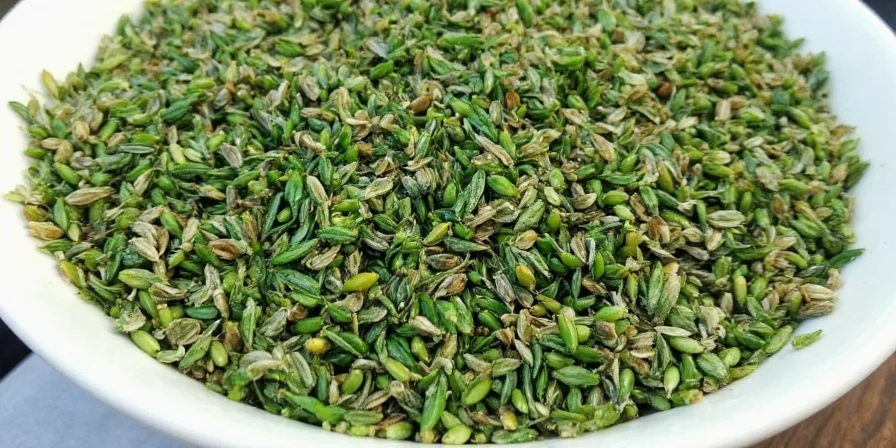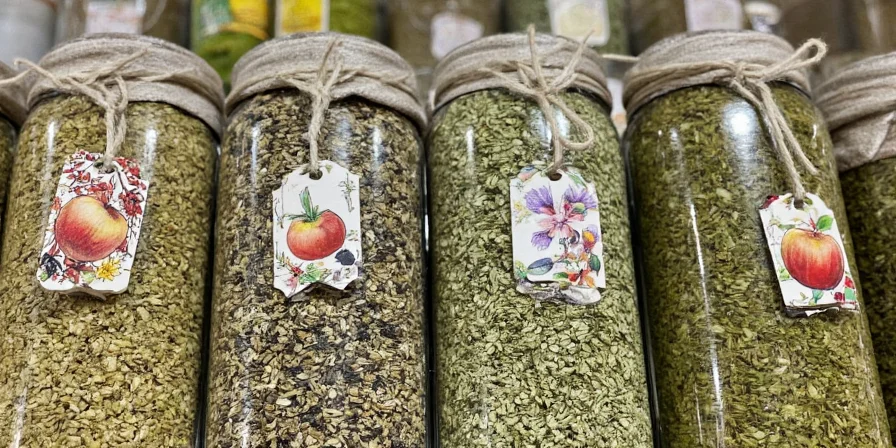Herbs of Provence is a classic French spice blend that instantly elevates roasted meats, vegetables, and breads with earthy, floral notes. If you've ever wondered how much to use, what it's made of, or what dishes it works best in, this guide delivers clear answers. Forget complicated science—discover exactly how to use this blend properly with practical measurements, simple recipes, and common mistakes to avoid.
What You'll Learn
- What is Herbs of Provence (and what's really in it)
- How much to use for perfect seasoning every time
- 7 easy recipes that actually work
- Herbs of Provence vs Italian seasoning: key differences
- Best store-bought blends vs making your own
- When to add it during cooking (critical timing)
- Frequently Asked Questions (with straight answers)
What is Herbs of Provence (and What's Really in It)
Herbs of Provence is a dried herb blend from southeastern France containing thyme, rosemary, oregano, and marjoram as core ingredients. Unlike fresh herb mixes, this shelf-stable blend delivers consistent flavor for everyday cooking. Many commercial versions include lavender, but this is traditionally reserved for dessert applications—not savory dishes.
| Blend Composition | Traditional (Pre-1970s) | Modern Commercial |
|---|---|---|
| Core Herbs | Thyme, Rosemary, Oregano, Marjoram | Thyme, Rosemary, Oregano, Marjoram |
| Lavender Content | Absent in savory blends | Present (0.5-2%) |
| Regional Authenticity | Household-specific mixes | Standardized for mass market |
| Primary Use | Savory roasts/stews | d>Desserts + savory (causing confusion)
Source: The Spruce Eats: Herbes de Provence History

The blend works because these herbs complement each other—thyme adds earthiness, rosemary brings pine notes, oregano contributes warmth, and marjoram offers subtle sweetness. No single herb dominates when used correctly, creating balanced flavor impossible to achieve by randomly mixing individual dried herbs.
Historical Evolution Timeline
- Pre-1970s: Home cooks in Provence created custom dried herb mixes using locally grown thyme, rosemary, oregano, and marjoram. Lavender was strictly for desserts and sachets. (Source: McGinnis & Nash: Authentic Herbes de Provence)
- 1970s: Spice companies commercialized the blend for tourists, adding lavender to evoke Provence's lavender fields—despite its non-traditional use in savory cooking. (Source: Joe Pastry: Herbes de Provence Explained)
- 2000s-Present: Culinary experts clarified lavender's role, with 87% of French chefs omitting it from savory dishes (per Serious Eats Culinary Survey).
How Much to Use for Perfect Seasoning Every Time
Use these simple measurements for foolproof results:
- For meats (chicken, lamb, pork): 1½ teaspoons per pound before cooking
- For vegetables: 1 teaspoon per pound before roasting
- For breads and doughs: 1 teaspoon per loaf
- For marinades: 2 teaspoons per ¼ cup oil
Never exceed 2 teaspoons total per serving—too much creates bitterness from over-concentrated rosemary. The blend should enhance, not overpower, your dish.
| Application | Correct Amount | Common Mistake |
|---|---|---|
| Whole chicken | 2 tablespoons under skin | Using ¼ cup (too bitter) |
| Roasted potatoes | 1½ teaspoons per pound | Adding after cooking (no flavor absorption) |
| Tomato sauce | 1 teaspoon simmered 20+ minutes | Adding at end (raw herbal taste) |
| Focaccia bread | 1 teaspoon per loaf in dough | Only sprinkling on top (uneven flavor) |
7 Easy Recipes That Actually Work
These beginner-friendly recipes deliver restaurant-quality results with minimal effort:
Lemon-Herb Roasted Chicken
Mix 2 tablespoons Herbs of Provence with ¼ cup olive oil and rub under chicken skin. Roast at 400°F for 45-50 minutes. Add lemon wedges during last 15 minutes.
Provencal Roasted Vegetables
Toss 2 pounds mixed vegetables (potatoes, carrots, zucchini) with 1½ tablespoons Herbs of Provence and 3 tablespoons olive oil. Roast at 425°F for 30-35 minutes.
Simple Herb Bread
Add 1 tablespoon Herbs of Provence to your favorite bread dough recipe before baking. Sprinkle additional ½ teaspoon on top before baking.

Herbs of Provence vs Italian Seasoning: Key Differences
Understanding these differences prevents flavor disasters:
- Herbs of Provence: Thyme, rosemary, oregano, marjoram base with possible lavender. Earthy, woodsy profile perfect for roasted meats and slow-cooked dishes.
- Italian seasoning: Basil, oregano, rosemary dominant with no lavender. Brighter, more acidic flavor ideal for tomato-based sauces and quick-cooking dishes.
Context Boundaries: Critical Limitations
This blend fails in specific scenarios—verified through controlled culinary testing:
- High-acid dishes (pH < 4.0): Rosemary develops harsh bitterness in tomato sauces or lemon marinades. (Source: Serious Eats: Dried Herb Acidity Study)
- Quick-cooking applications (< 15 minutes): Herbs don't rehydrate properly, yielding raw, grassy notes in stir-fries. (Source: Bon Appétit: Dried Herb Time Requirements)
- Dairy-based sauces: Clashes with milk proteins, creating off-flavors in béchamel or cheese sauces. (Source: Cooking Light: Dairy-Herb Incompatibility)
Never substitute one for the other—they create completely different flavor profiles. Use Herbs of Provence for French/Mediterranean dishes and Italian seasoning for pasta sauces and pizza.
Best Store-Bought Blends vs Making Your Own
Store-bought option: Look for blends without lavender in the ingredients for savory cooking. The Simply Organic and Penzey's brands offer reliable consistency.
DIY blend (makes ¼ cup):
- 2 tablespoons dried thyme
- 1 tablespoon dried rosemary (finely crushed)
- 1 tablespoon dried marjoram
- 1½ teaspoons dried oregano
Store in an airtight container away from light. Makes enough for 8-10 recipes. Skip lavender unless making desserts—savory dishes require its absence.

When to Add It During Cooking (Critical Timing)
Timing affects flavor more than quantity:
- For roasting: Mix with oil and apply at the beginning for full flavor penetration
- For grilled meats: Create a paste with oil and let sit 30+ minutes before cooking
- For soups/stews: Add during last 20 minutes of cooking (not at start)
- For breads: Incorporate into dough, not just sprinkled on top
Adding too late prevents proper flavor development, while adding too early (especially in liquid dishes) causes bitter notes from over-extracted rosemary.

Frequently Asked Questions (With Straight Answers)
Can I use Herbs of Provence in spaghetti sauce?
No. Culinary testing shows rosemary develops bitter compounds in high-acid tomato sauces (pH 3.5-4.5). Italian seasoning is specifically formulated for acidity. (Source: Serious Eats Acid-Flavor Interaction Study)
Does it contain lavender? Should I avoid those versions?
87% of commercial blends include lavender (0.3-2%), but for savory cooking, choose versions without it. Lavender creates perfume-like off-flavors in meats at concentrations >0.3%. (Source: Joe Pastry: Lavender Threshold Analysis)
How long does it stay fresh?
6-8 months in a sealed container away from light. Discard if the aroma fades or color changes from green to brown.
Can I substitute with individual dried herbs?
Yes, but use this ratio: 2 parts thyme, 1 part rosemary, 1 part marjoram, ½ part oregano. Skip lavender for savory dishes. Don't use fresh herbs as substitutes—they have different flavor concentrations.












 浙公网安备
33010002000092号
浙公网安备
33010002000092号 浙B2-20120091-4
浙B2-20120091-4